 First edition | |
| Author | John Buchan |
|---|---|
| Language | English |
| Genre | Adventure novel |
| Set in | Scotland |
| Publisher | Hodder & Stoughton [1] |
Publication date | 1925 [1] |
| Media type | |
| Pages | 320 [1] |
John Macnab is a 1925 adventure novel by the Scottish author John Buchan.
 First edition | |
| Author | John Buchan |
|---|---|
| Language | English |
| Genre | Adventure novel |
| Set in | Scotland |
| Publisher | Hodder & Stoughton [1] |
Publication date | 1925 [1] |
| Media type | |
| Pages | 320 [1] |
John Macnab is a 1925 adventure novel by the Scottish author John Buchan.
Three successful friends in their forties confess their ennui with their lives and professions. They are Sir Edward Leithen, lawyer, Member of Parliament and ex-Attorney General; John Palliser-Yeates, banker; and Charles, Earl of Lamancha, a Cabinet Minister. The friends are advised by a doctor that in order to recover their zest for life they should shake themselves out of their predictable lives and spend time doing something really difficult and dangerous. They decide to turn to poaching, an activity both technically challenging and also dangerous, since to be caught and publicly named would inevitably result in a career-ending scandal for such high-profile men.
Under the collective name of 'John Macnab', they set up a base in the Highland home of their young friend Sir Archie Roylance, Laird of Crask, disabled war veteran and local Conservative parliamentary candidate.
'John Macnab' writes to three of Sir Archie's neighbours informing them that he intends to kill a stag (or salmon) on their land between two specified dates. If he fails he will pay a forfeit of £100, and if he succeeds will pay £50 to charity. All three reply. Colonel Raden, head of an old-established Scottish family and owner of the Glenraden estate, recognises that the writer is some sort of sportsman, and accepts the challenge; Junius Bandicott, an American who is leasing Strathlarrig estate, confesses himself unfamilair with local customs, but also accepts; and Lord Claybody, the rich and rather vulgar lesee of Haripol Forest, replies via his attorneys threatening to prosecute anyone who trespasses on his land. The friends draw lots: Palliser-Yeates will take a stag at Glenraden, Leithen a salmon at Strathlarrig, and Lamancha a stag in the Haripol Forest.
Archie meets Janet Raden, the colonel's daughter, who puts him into a quandry by asking for his help in defeating John Macnab at Glenraden and winning the promised £100. Junius Bandicott's father, Acheson Bandicott, is an archaeologist who has been given permission to excavate a site on Glandraden that he believes to be the tomb of Harald Blacktooth. With the help of the homeless young fish seller 'Fish Benjie', Palliser-Yeates manages to shoot a stag under cover of the sound of the excavations, but is spotted by Janet before he is able to get the beast away. He escapes without being identified.
Leithen's task at Strathlarrig is complicated by the arrival of a hoard of journalists covering Bandicott's archaeological discoveries. Disguised as a tramp, he manages to take a salmon, but has to leave it on the bank to avoid being caught in possession. To throw the gillie off the scent he cuts a chunk out of the fish's flesh with a knife, and pretends that the fish was killed by an otter. Fish Benji picks it up for him, unobserved.
As the new parliamentary candidate, Archie has to give a speech at the hustings in Muirtown , but on stage finds himself too terrified even to start. Fortunately, he is saved when he recalls Janet's philosophy of life, which she had expounded to him the day before while they were walking alone in the hills. He extemporises, and makes a great, though unconventional, oration.
Lamancha's job of taking a stag in the Haripol Forest appears impossible when the journalists get wind of the John Macnab story, and crowd into the area. Claybody's son, Johnson, has also herded all the deer into the estate's sanctuary, and has surrounded it with a cordon of navvies. But with the help of a sympathetic journalist, Crossby, and a variety of feints, Lamancha succeeds in killing and extracting from the forest 'the auld hero', a famous stag.
Due to a misunderstanding, Lamancha accidentally blurts out to Claybody the identities of John Macnab. Claybody is confused, and says that he would gladly have made a game of it had he known that his adverseries were one of his own party leaders, a barrister he is instructing in a big case, and a banker with whom he has done a lot of business. No matter what they had done, Claybody says, he would never expose them.
The three friends have recovered their zest for life, and towards the end of the year Archie Roylance marries Janet Raden.
A contemporary Australian newspaper review considered the story to be "excellent and thoroughly entertaining", and from which "readers will be able to extract a good deal of genuine amusement". [2] Another Australian newspaper called it "a tale that commands attention from the opening chapter." [3]
John Prebble adapted the book for a three-part BBC television production in 1976, directed by Donald McWhinnie. [4]

John Buchan, 1st Baron Tweedsmuir was a Scottish novelist, historian, and Unionist politician who served as Governor General of Canada, the 15th since Canadian Confederation.
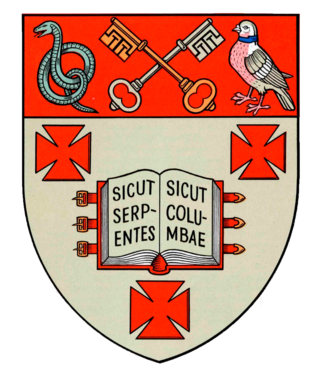
Radley College, formally St Peter's College, Radley or even the College of St. Peter at Radley, is a public school near Radley, Oxfordshire, England, which was founded in 1847. The school covers 800 acres including playing fields, a golf course, a lake, and farmland. Before the counties of England were re-organised, the school was in Berkshire.

Admiral Sir Charles Saunders was a British Royal Navy officer. He commanded the fourth-rate HMS Gloucester and led her in action at the Second Battle of Cape Finisterre in October 1747 during the War of the Austrian Succession. After serving as Commander-in-Chief, Mediterranean Fleet, he was appointed Commander-in-Chief, English Channel in charge of the Western Squadron between October 1758 and May 1759). He took command of the fleet tasked with carrying James Wolfe to Quebec in January 1759 and consolidated the dead general's victory after the Battle of the Plains of Abraham in September 1759 by devoting great energy to keeping the British Army, now under the command of Colonel George Townshend, well supplied during the Seven Years' War. He later became Senior Naval Lord and then First Lord of the Admiralty.
Colonel John Downes was a commissioner who signed the death warrant of Charles I of England. After the English Restoration he was found guilty of regicide and imprisoned for life.

Mr Standfast is the third of five Richard Hannay novels by John Buchan, first published in 1919 by Hodder & Stoughton, London.

The Three Hostages is the fourth of five Richard Hannay novels by the Scottish author John Buchan, first published in 1924 by Hodder & Stoughton, London.
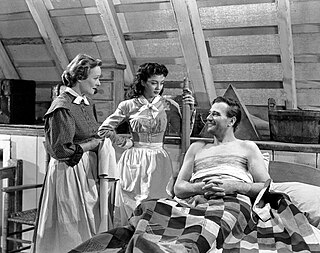
Archibald Job Stout, ASC was an American cinematographer whose career spanned from 1914 to 1954. He enjoyed a long and fruitful association with John Ford, working as the principal cinematographer on Fort Apache (1948) and second unit cinematographer on She Wore a Yellow Ribbon (1949) and The Quiet Man (1952), becoming the only 2nd unit cinematographer to receive an Oscar. In a wide-ranging career, he also worked on such films as the original version of The Ten Commandments (1923) and several Hopalong Cassidy and Tarzan films. His last film was the airborne disaster movie The High and the Mighty in 1954.

The Island of Sheep is a 1936 novel by the Scottish author John Buchan, the last of his novels to focus on his characters Richard Hannay and Sandy Arbuthnot. It was published in the United States under the title The Man from the Norlands.
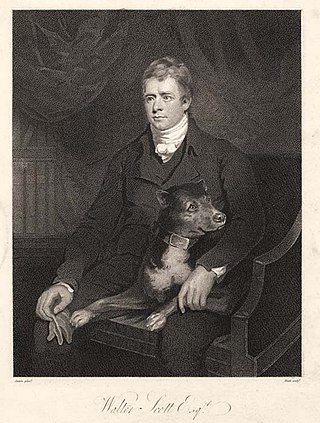
Minstrelsy of the Scottish Border is an anthology of Border ballads, together with some from north-east Scotland and a few modern literary ballads, edited by Walter Scott. It was first published by Archibald Constable in Edinburgh in 1802, but was expanded in several later editions, reaching its final state in 1830, two years before Scott's death. It includes many of the most famous Scottish ballads, such as Sir Patrick Spens, The Young Tamlane, The Twa Corbies, The Douglas Tragedy, Clerk Saunders, Kempion, The Wife of Usher's Well, The Cruel Sister, The Dæmon Lover, and Thomas the Rhymer. Scott enlisted the help of several collaborators, notably John Leyden, and found his ballads both by field research of his own and by consulting the manuscript collections of others. Controversially, in the editing of his texts he preferred literary quality over scholarly rigour, but Minstrelsy of the Scottish Border nevertheless attracted high praise from the first. It was influential both in Britain and on the Continent, and helped to decide the course of Scott's later career as a poet and novelist. In recent years it has been called "the most exciting collection of ballads ever to appear."
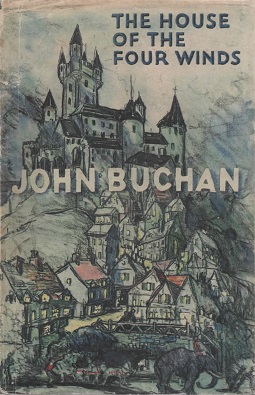
The House of the Four Winds is a 1935 adventure novel by the Scots author John Buchan. It is a Ruritanian romance, and the last of his three Dickson McCunn books. The novel is set in the fictional Central European country of Evallonia and opens two years after the events recounted in Castle Gay.
Sir Edward Leithen is a fictional character in several of John Buchan's novels: The Power-House, John Macnab, The Dancing Floor, The Gap in the Curtain and Sick Heart River. These were published over a number of years, the first in 1916, and the last in 1941, one year after Buchan's death. Leithen's name is borrowed from the Leithen Water, a tributary of the River Tweed, one of many references to the Scottish Borders in Buchan's novels.
There has been one baronetcy granted to the Lauder family. The baronetcy of Lauder of Fountainhall, Haddingtonshire, was created for John Lauder, last surviving male representative of the Lauders of that Ilk, a rich merchant-burgess and sometime Treasurer and baillie of the City of Edinburgh Council, and an armiger. He purchased the estate of Newington, Edinburgh, and subsequently the lands of Woodhead and Templehall near Pencaitland, which along with others in Edinburghshire and Haddingtonshire, were erected by Crown charter into the feudal barony of Fountainhall on 13 August 1681.

Huntingtower is a 1922 novel by the Scottish author John Buchan, initially serialised in Popular Magazine between August and September 1921. It is the first of his three Dickson McCunn books, the action taking place in the district of Carrick in Galloway, Scotland.

Sir Hector Og Maclean (1583–1623), or Eachann Óg Maclean in Scottish Gaelic, was the 15th Clan Chief of Clan Maclean in Scotland.
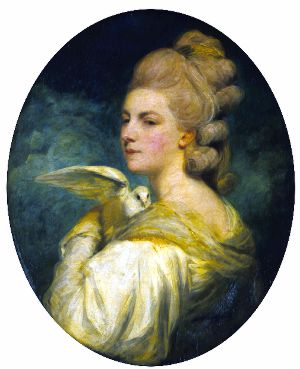
Mary Nesbitt was an English upper class socialite and courtesan who mixed in the elevated circles of government and royalty in late 18th century Great Britain. Her home, Norwood House, in Upper Norwood, then Surrey, now South London, became a meeting place for the rich and powerful.
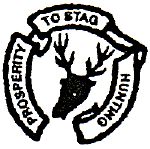
The red deer of Exmoor have been hunted since Norman times, when Exmoor was declared a Royal Forest. Collyns stated the earliest record of a pack of Staghounds on Exmoor was 1598. In 1803, the "North Devon Staghounds" became a subscription pack. In 1824/5 30 couples of hounds, the last of the true staghounds, were sold to a baron in Germany. Today, the Devon and Somerset is one of three staghounds packs in the UK, the others being the Quantock Staghounds and the Tiverton Staghounds. All packs hunt within Devon and Somerset. The Chairman as of 2016 is Tom Yandle, who was previously High Sheriff of Somerset in 1999.
John Palliser-Yeates is a fictional character created by John Buchan. He appears in several Buchan novels, notably John Macnab.
Charles Lamancha is a fictional character who appears in several novels by John Buchan.
Sir Archibald Roylance was a fictional character created by John Buchan. He appeared in many Buchan novels, never as the protagonist. He was a good friend of Richard Hannay and Edward Leithen despite being younger than them.

The Runagates Club is a 1928 collection of short stories by the Scottish author John Buchan. The collection consists of twelve tales presented as reminiscences of members of The Runagates Club, a London dining society. Several of the stories are recounted by recurrent characters in Buchan’s fiction, including Richard Hannay, Sandy Arbuthnot, John Palliser-Yeates, Charles Lamancha, and Edward Leithen.